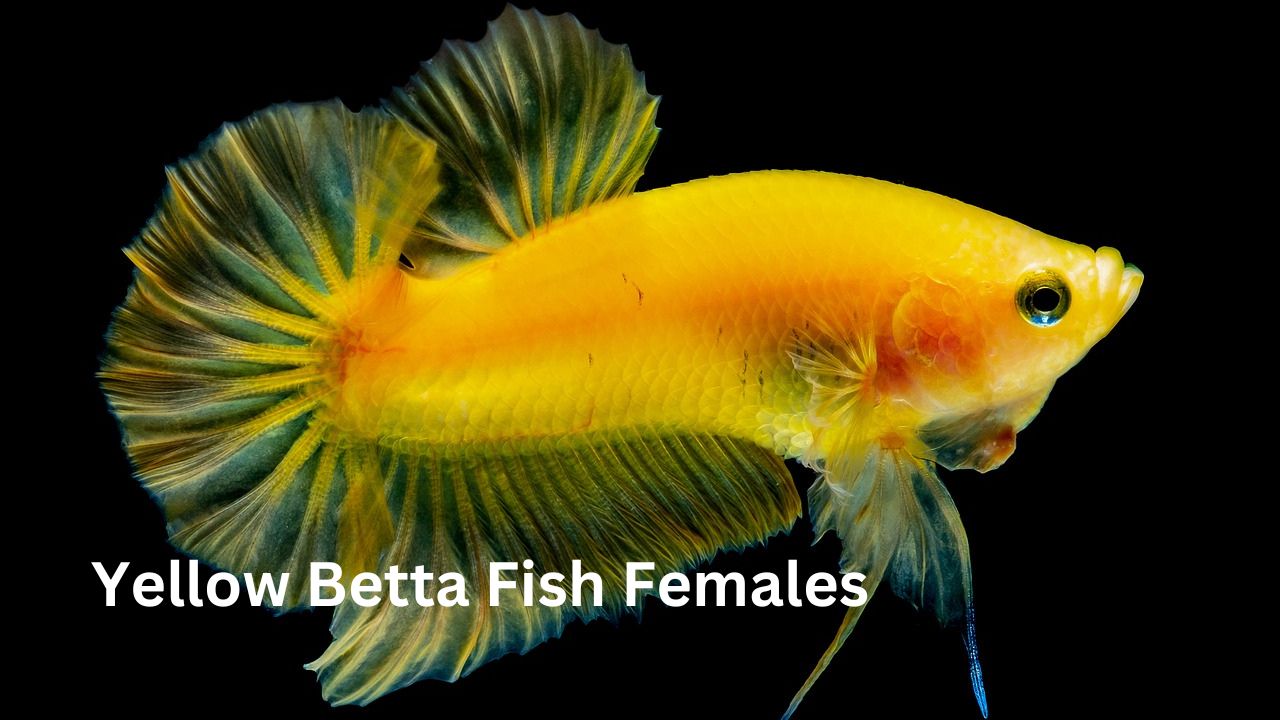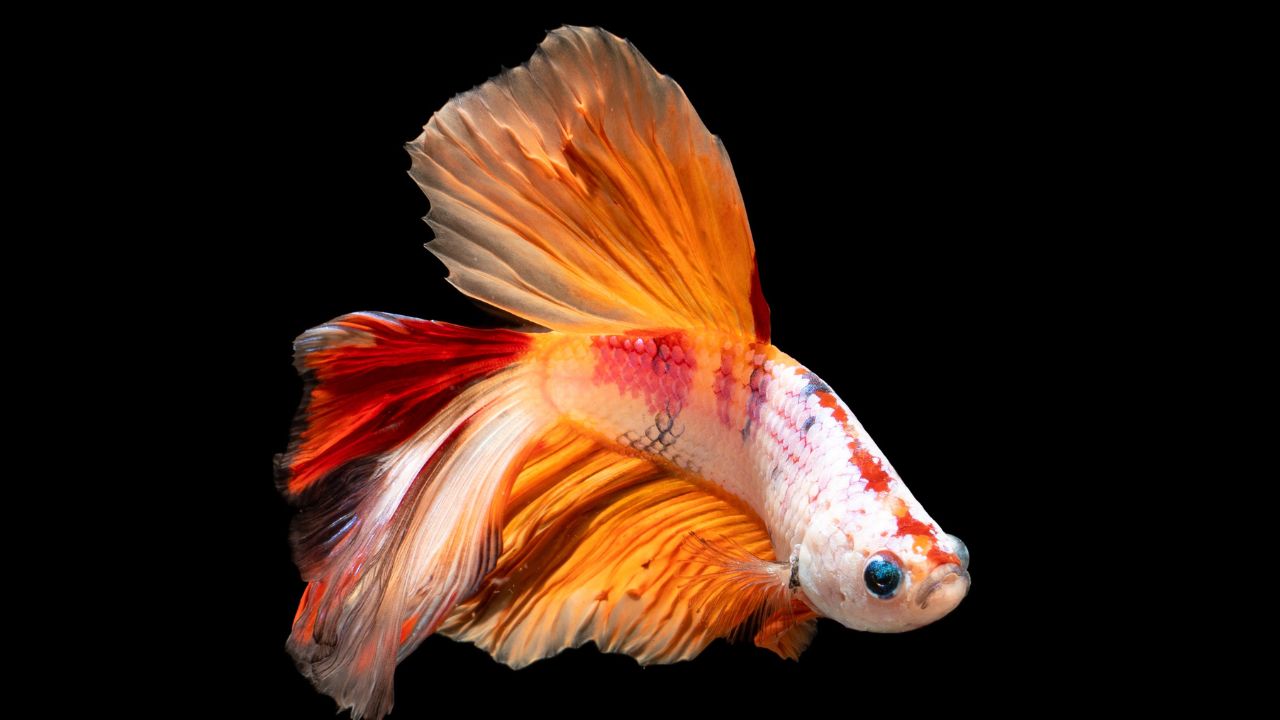Yellow Betta Fish Females – The Bright Beauties of Betta Splendens
Introduction
Yellow betta fish females are a vibrant variation of the popular Siamese fighting fish. With their sunshine shades of yellow, orange, and gold, these females make stunning additions to home aquariums. Their flowing fins and active nature captivate fishkeepers.
To understand yellow betta fish females, we must first examine the origins of betta fish in general. Bettas hail from the rice paddies and slow-moving streams of Thailand, formally Siam. The males’ aggressive behaviors towards one another are how they earned the name Siamese fighting fish. Female bettas tend to be less aggressive and territorial than their male counterparts.
Yellow Betta Fish Female Characteristics
While most people associate bettas with deep red hues or royal blue tones, yellow betta fish females shake things up. They exhibit shades ranging from pastel yellow to rich gold. You may also encounter orange or amber fish. These bright warm colors stand out beautifully.
Yellow females have the same general anatomy as other female betta fish. They have smaller fins than males but still possess the long-flowing caudal fin. Their pectoral, ventral, dorsal, and anal fins may feature reddish highlights. Females grow 3-4 inches long when mature.
Care for Yellow Betta Females
Caring for yellow betta fish females requires an understanding of general betta care plus a few special considerations. Use these tips to help your yellow beauty thrive:
Tank Setup
- Minimum 5-gallon tank
- Filter preferred
- Heater to maintain 78-80 F temperatures
- Soft substrate
- Plenty of plants and hiding spots
Ideal Water Conditions
- Temperature 78-80 F
- pH 6.8-7.5
- Hardness 5-10 dGH
- Ammonia and nitrites at 0 ppm
- Nitrates under 20 ppm
Tank Mates
- Peaceful community fish like tetras, rasboras, corydoras catfish, cherry shrimp
- Avoid fin nippers and aggressive tank mates
Feeding Yellow Females
- High-quality betta pellet
- Occasional frozen or live foods
- Varied diet for optimal health
- Feed twice per day, only what she can eat in 2-3 minutes
Breeding Yellow Bettas
Breeding yellow females takes preparation but yields amazing results. Watching tiny yellow fry emerge is incredibly rewarding! Here is an overview of the process:
Selecting a Pair
Start by choosing a mature, vigorous yellow female and an equally healthy male with strong fins and colors. Condition the pair by feeding them nutritious foods.
Spawning Process
Introduce the pair in a small tank, heavily planted with places to hide. Sometimes the presence of another female speeds things along through competition.
The male constructs a bubble nest and begins displaying to the female with his fins. He entices the female under the nest, where she releases her eggs as he fertilizes and collects them in the bubbles.
Raising the Fry
After hatching, the tiny yellow larvae hang vertically from the bubble nest—once free-swimming, feed infusoria then finely crushed betta food. Growth is remarkably fast and soon you have youthful yellow females ready for new homes!
Common Issues with Females
Female bettas are generally hardier than long-finned males but still face some common health issues:
Egg Binding
Egg binding occurs when a female cannot release her eggs. Symptoms include bloating, lack of appetite, and lethargy. Adding tannins via Indian almond leaves can help treat this.
Swim Bladder Disorder
A swim bladder infection causes buoyancy issues. Bettas struggle to stay upright or float sideways at the top. Fix water conditions and fast for a few days to treat mild cases.
Fin Rot
Despite their shorter fins, yellow females can still develop fin rot. Look for torn, frayed edges that worsen over time. Improve water quality and add aquarium salt to remedy the issue.
Conclusion
With their vibrant presence and flowing fins, yellow betta fish females make exceptional additions to home aquariums. Their lower maintenance needs compared to males give beginners some slack yet their beauty still dazzles advanced hobbyists. Ensure proper housing and care, and you will enjoy your little ray of sunshine for years to come!
FAQs
What size tank do I need for a yellow female betta?
Yellow female bettas need a tank of at least 5 gallons. Make sure any tank you choose is filtered, heated, and cycled. Go even larger if you plan to add tank mates.
Why is my yellow betta not eating?
Loss of appetite often signals an underlying health issue in yellow females. Test your water quality and perform partial water changes if ammonia or nitrites are detectable. Evaluate her behavior to rule out disease or internal parasites.
How can I tell a male yellow betta from a female?
Males have significantly larger fins, especially longer ventral and caudal fins used for flaring displays. They also have a distinctly pointed anal fin. Females have a blunt edge to their relatively shorter anal fin.
What species of plants do yellow betta females enjoy?
Go for soft-leaved live plants like anacharis, water sprite, java moss, and bananas. These provide cover while still allowing a swimming room. Silk plants also work well. Avoid sharp plastic decor.
Can I keep a single female as an only fish?
While shoaling fish need groups, female bettas do well solo in an appropriately sized, enriched tank. Ensure she has areas to explore and plants for refuge to prevent boredom or stress when kept single. Perform regular tank maintenance as well.


1 thought on “Yellow Betta Fish Females – The Bright Beauties of Betta Splendens”